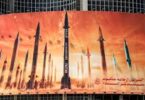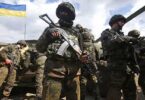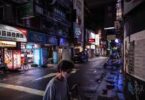Belén Fernández
One of the protagonists of Palestinian actor-director Mohammad Bakri’s 2002 documentary Jenin, Jenin – which deals with that year’s Israeli military attack on the Jenin refugee camp in the occupied West Bank – is a young Palestinian girl with brown bangs and no-nonsense eyes.
Picking her way in her school uniform through the rubble of the onslaught that killed 52 Palestinians, she swears: “We will not give up. Yes, they destroyed everything but we will rebuild it.” She also warns: “We’ll keep on having children. They’ll become stronger and braver than ever.” Fast forward 21 years, and Jenin is once again on the receiving end of Israel’s fetish for destruction.
On June 19, Israeli combat helicopters fired missiles into the camp, ostensibly as part of an arrest operation that ended up killing five Palestinians, including a 15-year-old girl named Sadeel Naghniyeh. Then in early July, in the worst attack on the West Bank since 2002, the Israeli armed forces terrorised the inhabitants of Jenin for two days and killed at least 12 people, including children. The massive aerial and ground assault involved helicopter gunships, missiles, drones, armoured vehicles, bulldozers and more than 1,000 Israeli soldiers. That is what happens, it seems, when Palestinians keep rebuilding – and keep existing. Indeed, Al Jazeera quoted 56-year-old camp resident Ahmed Abu Hweileh on the takeaway from the bloody escapade: “The message to the world and the occupation is that this camp will keep on going. They tried to destroy it and it came back up.” Israel’s recent comportment in Jenin – and particularly the sudden use of air strikes in the West Bank for the first time in years – has invited comparisons to the Israeli modus operandi in the Gaza Strip, another location that has come to symbolise Palestinian resistance.
Gaza, of course, is quite well-acquainted with the ins and outs of aerial punishment: buildings annihilated in one fell swoop; people massacred by the tens or thousands in military operations of varying duration; hospitals, power plants, and other critical infrastructure damaged or destroyed. In May 2021, in the midst of the coronavirus pandemic, an Israeli air strike devastated Gaza’s only COVID-19 testing and vaccination centre in the context of an 11-day assault that killed some 260 people, including 67 children.
And while Jenin has hardly been exempt from Israeli antagonisation in the years since 2002, it has tended to be of a more hands-on variety than in Gaza. Just recall last year’s killing of Al Jazeera journalist Shireen Abu Akleh, shot in the back of the head by a soldier while covering an Israeli military raid on the camp. With Israel’s latest deadly incursions, though, the Palestinians of Jenin are being reintroduced to the joys of airborne terror in confined and densely populated spaces. And like in Gaza, we are talking about people who are already refugees being displaced again due to aerial bombardment.
On account of the 48-hour July raid, thousands in Jenin were forced to flee their homes; according to the United Nations, about 900 houses were damaged, many to the point of uninhabitability. The UN also found that Israel’s deployment of “heavy machinery that ripped up large sections of the roads” had resulted in the destruction of nearly 8 kilometres (5 miles) of water pipes and 3km (1.8 miles) of sewage lines. In the aftermath of the July episode, which Israeli officials have underscored can be replicated at any moment, observers have increasingly drawn parallels between Israel’s new approach to Jenin and its good old strategy of “mowing the lawn” in Gaza. As The Washington Post noted back in May 2021 – during the aforementioned 11-day operation that saw 67 children put through the lawn mower, as it were – the grass-mowing terminology “implies the Palestinian militants in the Gaza Strip and their supply of crude but effective homemade weapons are like weeds that need to be cut back”. Around the same time, the vice president of the Jerusalem Institute for Strategic Studies David M Weinberg penned an opinion piece for The Jerusalem Post, praising the strategy’s effectiveness because, in the absence of lawn mowing, “weeds grow wild and snakes begin to slither around in the brush”. This, to be sure, was not the first occasion on which Zionists had undertaken to liken Palestinians to snakes. In the lead-up to Operation Protective Edge – the 51-day lawn-mowing session in 2014 that dispensed with 2,251 Palestinians in Gaza, among them 551 children – then-Israeli parliamentarian Ayelet Shaked took to Facebook to post the text of an article suggesting that the mothers of Palestinian fighters also be eliminated, as well as “the physical homes in which they raised the snakes”.
Otherwise, the article went on, “more little snakes will be raised there”. Shaked, for her part, went on to be the justice minister of Israel. For now, it remains to be seen whether Israel’s new approach to Jenin will eventually lead to a Gaza-esque siege – Israeli Prime Minister Benjamin Netanyahu’s branding of the refugee camp as a “terrorist nest” could certainly help do the trick.
One recalls Bakri’s film Jenin, Jenin, and the schoolgirl with brown bangs who pledged to rebuild and resist. Citing all of the “dead bodies, houses in ruins, and undescribable atrocities” she witnessed in the camp in 2002, the young girl promised to “never make peace” with Israel. Shaking her head with an awareness beyond her years, she reasoned: “After all I’ve been through, what will become of my life? After they shattered my dreams, what is left for me to say?” It is hard to argue with that logic. And 21 years later, it is clearer than ever that, for Israel itself, peace was never the point.
Aljazeera







